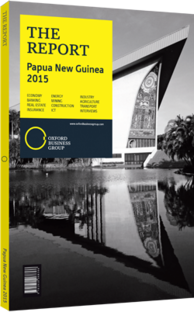Cruise tourism is docking in PNG
Steady growth in global cruise tourism is reaching the South Pacific, and Papua New Guinea is no exception. In 2014 some 22.1m passengers boarded cruise ships, up from 21.3m in 2013, according to the Cruise Lines International Association (CLIA), which forecasts 23m for 2015. One of the fastest-growing source markets is Australia, where passenger numbers rose 130.3% in the five years to end-2013. While most global cruises head for the Caribbean (37.3%), the Mediterranean (18.9%) or Northern Europe (11.1%), Asia, though it made up just 4.4% of 2013 traffic, was expected to see the highest surge in ship deployments of any region in 2014, at 31.6%. For Australasia the figure was 22%.
Pacific islands near the growing Australian source market, including PNG, are looking to capitalise on this. Many offer pristine natural settings and unique cultural attractions to any North American and European cruise travellers willing to venture farther from home. In anticipation of new visitors, they are thus ramping up their cruise facilities and promotional efforts. With just 1% of international cruisers visiting a Pacific island each year – about 220,000 – the South Pacific Tourism Organisation, an intergovernmental promotion and development body, has been sending delegations to the world’s leading trade shows as part of its Pacific Cruise Tourism Development Strategy 2015-19.
Cruise Control
Aware of the segment’s potential, PNG launched its own cruise tourism strategy in 2010, focused on improving port facilities and promoting near-shore excursions. In the towns of Kitava and Kaibola in Milne Bay Province – well-known for its diving sites and home to the Kokodo Trail, which is popular with Australians – new jetties have been built. In Alotau, the province’s capital and already a port city, wharfs have been extended and new facilities added.
Besides building infrastructure, the PNG Tourism Authority (PNGTPA) is working to make docking easier by reducing paperwork and protocols. It is engaging with relevant state bodies – such as the PNG Ports Corporation, National Agriculture Quarantine Inspection Authority, National Maritime Safety Authority, PNG Customs Service, and the PNG Immigration and Citizenship Service Authority – to encourage cruise ships to dock, including at undeclared ports. Among the measures proposed or taken to draw more ships are waiving visa fees for cruise passengers and reducing pilot fees.
Southern Neighbour
Over half of all cruise passengers that come to PNG are Australian, according to the PNGTPA. Not only is Australia the undisputed source market leader; it is also considered more lucrative. Many cruise itineraries arriving from Australia are one-way, so that passengers can opt to extend their stay with a land-based holiday before flying home.
P&O Cruises, which originated in the UK and is the largest cruise line operating out of Australia, currently visits five ports in PNG. For 2015, two more – Kavieng and Madang – have been added. The company also operates four PNG-only excursions, departing from Brisbane, Sidney and Cairns. “P&O’s return to PNG was possible because of the strong support of the national government and local authorities, particularly in relation to the provision of infrastructure to accommodate cruise ship visits,” Ann Sherry, the CEO, told the media in May 2015. “As the Australian cruise market grows and matures, our passengers are keen to experience new destinations and culture.” It is not just Australian cruise lines that are adding PNG to their itineraries; others that stop at PNG include NYK Cruises from Japan, Holland-America from Amsterdam, Paul Gaugain from French Polynesia and Princess Cruises from the US.
Cross-Breeze
One general downside to cruise tourism, critics charge, is that it does not benefit the local hotel and restaurant trade, especially in the case of “all-inclusive” packages. In PNG, however, where reaching destinations outside major cities and finding suitable accommodation and amenities can be challenging, the opposite is true: cruise lines bring tourists to parts of the country that otherwise cannot be accessed and visited. This allows villages to receive a boost from cultural performances and handicraft sales.
You have reached the limit of premium articles you can view for free.
Choose from the options below to purchase print or digital editions of our Reports. You can also purchase a website subscription giving you unlimited access to all of our Reports online for 12 months.
If you have already purchased this Report or have a website subscription, please login to continue.

